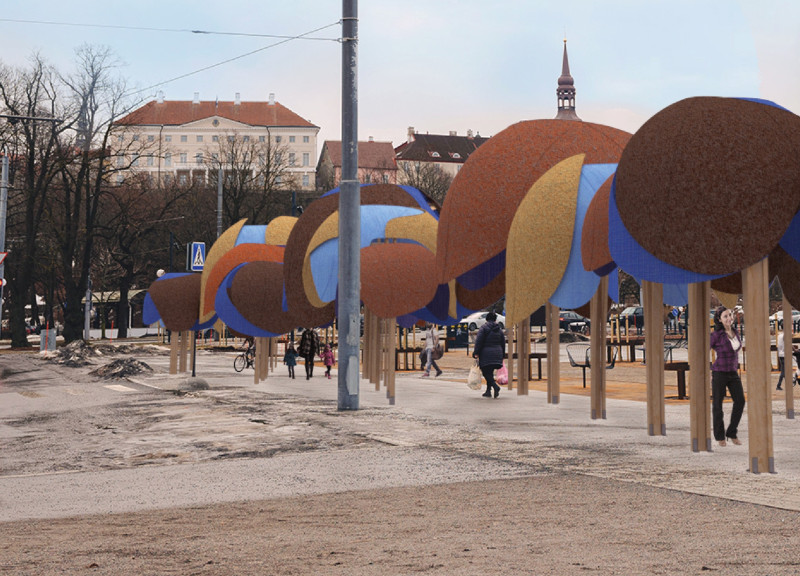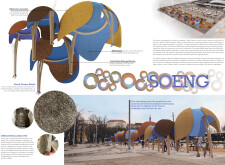5 key facts about this project
# SOENG Pavilion
## Overview
The SOENG Pavilion is a contemporary architectural installation located in Tallinn, Estonia, designed for a competitive context. The name "SOENG," meaning "hair" in Estonian, reflects a thoughtful engagement with cultural heritage, aiming to explore themes of identity and the intersection of modern and traditional design. This analysis delves into the pavilion's conceptual framework, material choices, and distinctive features.
## Spatial Configuration and Materiality
The pavilion's design is characterized by dome-like forms that replicate the natural curvature of human hair, featuring vibrant colors inspired by Estonia's landscape. A custom glulam birchwood structure provides a robust yet lightweight framework, ensuring structural integrity while aligning with local construction practices. The pavilion employs bolted joinery connections to attach the human hair felt panels to the timber structure, offering both stability and flexibility.
The choice of materials is central to the pavilion's vision. Stiffened human hair felt, crafted from discarded human hair, serves as a sustainable alternative for roofing and façade elements, dyed to integrate seamlessly with the surrounding environment. The use of glulam birchwood not only supports the design's structural needs but also highlights the importance of local forestry resources. Custom-designed textiles enhance the tactile experience for visitors, featuring stitching techniques that create intricate, inviting patterns.
## Cultural Engagement and Sustainability
The pavilion's focus on the concept of "hair" fosters a thoughtful dialogue between local traditions and contemporary architectural practices, encouraging community connection and cultural pride. The use of repurposed human hair as a primary material minimizes waste and challenges conventional architectural materiality, highlighting environmental consciousness.
Designed to facilitate social interaction, the pavilion creates shaded spaces for gatherings and activities, enhancing its role as a community hub. The vibrant colors and dynamic forms provide a striking contrast to Tallinn's historic architecture, enriching the urban landscape while inviting engagement and exploration among visitors.


















































